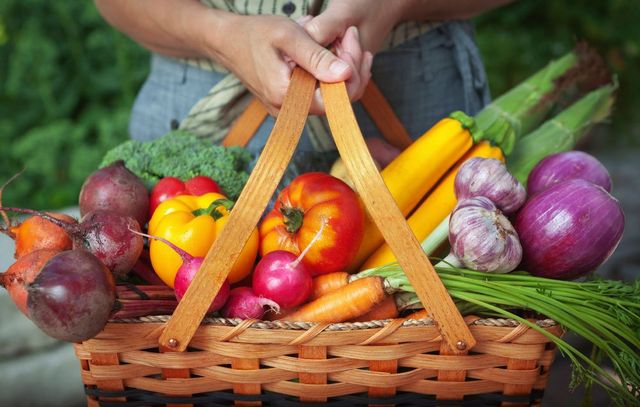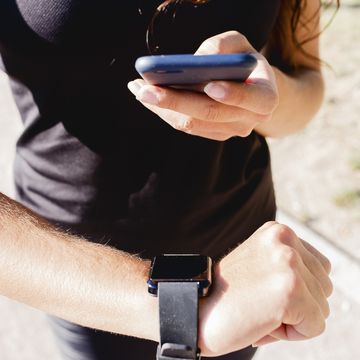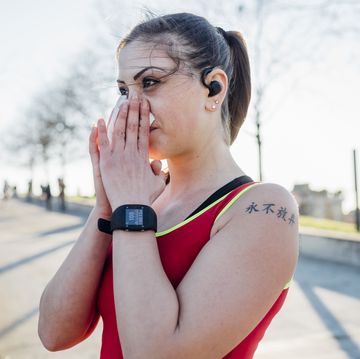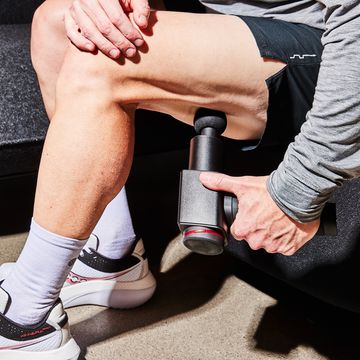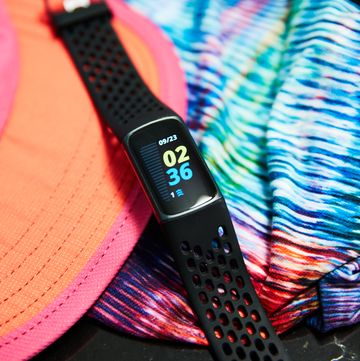You’ve likely heard and read dozens (maybe hundreds) of times that to lose weight, you need to eat fewer calories than you burn and/or burn more calories than you eat—3,500 of them for each pound to be exact. Those numbers are based on the thermodynamics of food when it’s burned with a Bunsen burner in a lab.
You are not a Bunsen burner.
The food you eat is not incinerated in some coal stove inside your body. What you eat goes through a digestive process that triggers a cascade of metabolic responses that dictate appetite, weight, fat storage, metabolic response and more.
Related: Not All Calories Are Created Equal
That means the way the human body reacts to 500 calories from Little Debbie Swiss Rolls is dramatically different from how it reacts to 500 calories in the form of roasted chicken with a side of kale. In fact, in one Purdue study where researchers had men and women add 500 calories of peanuts a day to their diet for 8 weeks, they not only didn’t gain weight, but also their triglyceride levels dropped by as much as 24 percent.
Related: 25 Great Snacks for Runners
How’d that happen? Scientists continue to work on that. But a prevailing theory is that foods rich in healthy fats and protein are more satisfying so you eat less junk that isn’t; protein-rich foods increase your digestive metabolism, so you burn more calories, and foods like nuts are high in fiber, so a fair amount of their caloric energy passes through you unabsorbed.
“One easy way to understand this is to ask yourself what would make you feel more full, 300 calories of apple juice (about 2 ½ cups) or 300 calories of apples (about 4 apples),” says the lead author of that peanut study, Richard D. Mattes, MPH, PhD, RD, director of the Ingestive Behavior Research Center at Purdue University. Metabolically speaking, getting calories from whole fruits like apples and berries protects you from weight gain and diseases like diabetes, while juice raises your risk for both.
Related: 20 Foods to Help You Shed Stubborn Pounds
This is all really important to understand when you’re looking at weight loss as well as overall health and certainly for cycling performance. If you want to count calories for health and weight loss, you need to make your calories count. Here’s 15 ways to slash the empty ones and get more of the ones you need most.
Eat Your Juice
One cup of orange juice contains 110 calories, 23 grams of sugar, and zero fiber. One orange comes in at just 62 calories, 12 grams of sugar, and 3 grams of fiber, the latter of which slows the sugar flow into your bloodstream and means you absorb fewer calories. Eating fruit instead of juice also slashes your risk for diabetes by up to 26 percent while drinking juice raises it 8 percent, according to a study of 187,382 people published in the British Medical Journal. Making the switch can save you hundreds of sugary calories a week.
Have Nuttier Snacks
Instead of eating that snack bag of chips, pour yourself a palmful of nuts. At 160 to 200 calories (the amount in those chips or pretzels) an ounce, nuts are calorie dense. But unlike those processed snack foods, they help you lose weight. One study published in the Journal of Nutrition found an inverse association between regular nut consumption and body mass index, while another published in the same journal found that people who ate nuts two or more times a week had less risk for weight gain and obesity over an 8 year period than their peers who rarely ate them. They’re also rich in muscle-building protein and inflammation-reducing healthy fatty acids as well as essential vitamins and minerals cyclists need.
Choose to Chew
You already know that the closer food is to its natural form, the better it is for your health. Well, whole foods are also better for your waistline. In a study of 450 students published in the American Journal of Clinical Nutrition, Japanese researchers found that those who regularly ate foods that required work to chew and eat had significantly leaner waistlines than those who generally consumed processed, easy to chew foods. Those findings were echoed in an animal study where mice eating softened feed actually became obese over the course of 5 ½ months, while those eating their usual hard feed saw no weight gains. Simple swaps like a steak over a burger, whole fruits and veggies rather than smoothies and trail mix over chips can add up to hundreds of calories burned and saved over time.
Related: Grab These 10 Healthy Chips When You're Hungry
Show up Late to Happy Hour
Long-term studies have found that those who drink moderately—about a drink a day—gain less weight overtime than those who abstain.
Related: The Health Benefits of Beer
But it’s easy to swing too far in the other direction and pack on pounds with too much booze consumption. Alcohol not only has more calories (7) per gram compared to carbs and protein, which have 4 calories per gram, but also the body burns it first. So if you flood your system with a fishbowl margarita, you won’t be burning anything else for hours. With your inhibitions blunted with booze, you’ll also likely toss down a few hundred more in the form of bar food. Stick to one or two weight-healthy drinks a day by being the last to show up at the bar and the first to leave.
Stream Your Own Soda
Half the people in the US get at least 200 calories a day from sugary soft drinks. Not surprising when you consider that a 20-ounce soda contains 240 calories in the form of 15 teaspoons of sugar. It’s flat-out awful for you and packs on pounds and raises your risk for diabetes the more you drink. In a review of 30 studies, researchers found a link between soda consumption and weight gain and obesity in both children and adults. If you like bubbly flavored beverages, buy a water carbonator (such as the Sodastream), bubble up some plain water, squeeze in a lemon and lime and save yourself hundreds of calories a day. And don’t fall for the diet soda trap—it’s no better than the sugary stuff for your metabolic health and has been linked to weight gain.
Eat In
Cooking your own meals can easily save you several-hundred calories per meal and increase the nutritional quality of your diet exponentially. Restaurants not only serve larger portions than what you’d typically eat at home, but also fill their meals with hidden fats and sugars that ramp up the calorie content. A study published in the Journal of the American Medical Association found that the average chain restaurant meal delivered a whopping 1,128 calories—nearly half a day’s worth. Even lunches tipped the caloric scales at over 1,000. You can make an abundance of healthy, delicious lunches for 600 calories or less at home.
Slow Your Roll
Inhaling your food like an alpha wolf defending his kill from the pack isn’t just impolite (especially if you are eating with others), but can also cause you to consume hundreds of extra calories throughout the day. A study published in the Journal of the Academy of Nutrition and Dietetics found that quick eaters not only consumed more than 10 percent more calories, but also felt less satisfied when the meal was done—and hence more likely to keep snacking afterward. The slow eaters also drank about a half-cup more water during the meal, which helps increase metabolism and keep calorie intake in check. Take smaller bites, chew each bite twice as long as you usually do, and put down your utensils between bites.
Aim For 8 Hours of Sleep a Night
Regularly shortchanging your sleep packs on pounds as your stress hormones like cortisol rise and your body goes into fat-storage mode—and that’s just half of the double-whammy too little sleep delivers to your waistline. You’re also likely to eat more—like 500 calories a day more. When a team of researchers took a group of men and women who regularly slept a healthy 7 to 9 hours a night and had them cut their shut eye time by a third for eight nights, the sleep-deprived volunteers responded by increasing their calorie consumption by an average of 549 calories. Keep your calories and cortisol in check by getting at least 7 hours of quality sleep a night.
Related: Why You Shouldn’t Fall Asleep on a Full Stomach
Exercise Before Breakfast
Delay breakfast until after your run or workout. You’ll fire up your fat burning and ultimately become a better fat burner not just while you exercise, but all day long. In a study published in EBioMedicine, Japanese researchers found that when you exercise before breakfast you can burn between 260 and 280 more calories throughout the day than when you exercise at other times.
Above, enjoy these protein-packed, egg-based mini meals postrun to speed recovery.
Make It Mushroom Monday, Any Day
Meaty mushrooms like shitakes, portobellos, and white buttons make good substitutes for beef in pasta dishes, soups and even sandwiches and burgers. They also save a ton of calories without leaving you hungry. In a study published in Appetite, Johns Hopkins researchers found that men and women who chose mushroom-based lunches over beef-based afternoon meals ate 444 fewer calories while still feeling just as satisfied.
Grow your own mushrooms with this kit from the Runner’s World shop.
Eat Mindfully and Purposefully
Mindful eating sounds new agey, but it’s more important than ever in our modern-day distracted lives, where we are eating over our cell phones while inadvertently bingeing on a block of cheese while binge-watching the latest dish from Netflix.
Asking yourself questions like why you’re eating (are you just bored?), what you’re eating (is it the best choice to fuel your active body?) and how much you should eat (do you need three slices of Sicilian or will two or even one do?) and then tuning into the taste of your meal. It can help you slash hundreds of calories a day. In one study, people with binge-eating disorders were actually able to reduce their weekly binge episodes from more than four per week to just one and a half through mindful eating practices. Even if you don’t chronically binge eat, chances are you mindlessly toss back more than you intend to at least now and then.
Quench Your Thirst before You Eat
Pour yourself a pint (of water) and drink it before your next meal, and you may eat about 90 fewer calories by the time you push away from the table, according to a study by researchers at Virginia Tech. Practice it three times a day and you may not only spare yourself close to 300 calories, but also will automatically get the fluid you need to stay well hydrated. Find plain water kind of blah? Spice it up with these tricks.
Eat Ancient Grains
When most Americans think grain, they think wheat, rice and corn. But there are some rising stars like amaranth, kamut, freekeh, farro, teff, millet, and, of course, quinoa that are blasting out of the past and nudging their way onto mainstream supermarket shelves.
Related: Run Strong With Whole Grains
These so called ancient grains are well worth a try because they tend to be higher in fiber and protein—both of which fill you up faster and stoke your metabolism higher—than the typical wheat and rice staples in our diet. Research shows that eating the recommended amount of daily fiber—38 grams a day for men, 25 grams a day for women—significantly reduces the risk of gaining weight over time.
Cook Rice Like This
Resistant starch is a type of starch your body doesn’t absorb from foods like rice, beans, pasta, bananas (and their peels), and other starchy foods. You can actually manipulate the amount of this calorie-saver in your rice dishes with a simple cooking trick: Just add a teaspoon of coconut oil to the boiling water. Then add a half a cup of rice. Simmer for 40 minutes or boil for 25. Then—and this is key—refrigerate it overnight (or 12 hours). You reduce the calories in a given serving by up to 60 percent, which means you get just 100 calories versus 200 calories per cup for white rice.
Eat More (Yes, More) Eggs
Now that the USDA recommended dietary restrictions on these nutrition-packed portable orbs is over, you can—and should—eat them more often, especially if you’re looking to lose weight. In a study published in the International Journal of Obesity, researchers from Louisiana State University found that men and women who ate two eggs for breakfast lost 65 percent more weight after two months than their peers who ate a bagel breakfast that contained the same number of calories. That’s likely because as other research points out, eggs improve satiety, so you’re likely to eat fewer calories the rest of the day. They’re also a lower-calorie option than many breakfast foods. Two large eggs contain just 150 calories, while one large blueberry muffin comes in at 385—twice as much.
The article 15 Ways to Cut Hundreds of (Empty) Calories a Day originally appeared on Bicycling.

